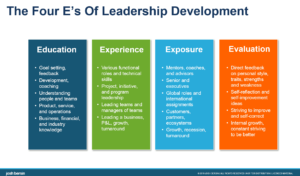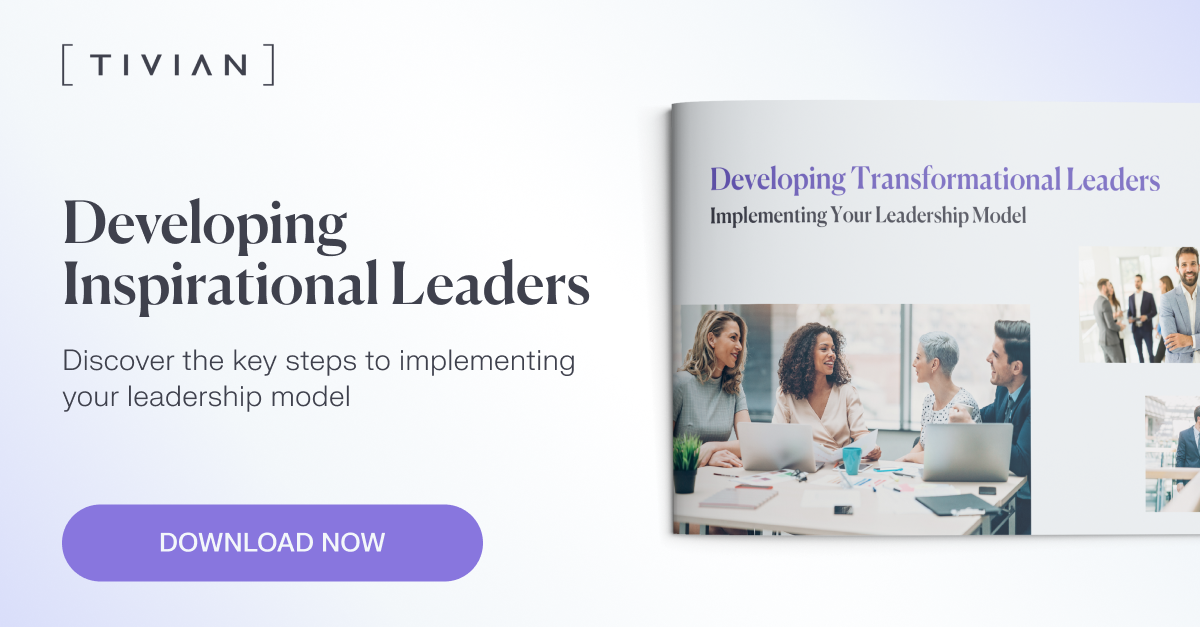For businesses to thrive, they need strong leaders. No-one is born with all the skills required to lead. That’s why companies invest heavily in leadership development programmes, spending over $14 billion every year in the US alone. And that doesn’t include the thousands of books, magazine articles and webinars available to help people develop into better leaders.
Put simply, well-structured leadership development programmes empower employees to learn new knowledge and skills, giving them confidence in managing people and driving their organisation forward. They don’t just benefit the individual, but their team members and the wider business too. Companies that focus on leadership tend to be better at customer service, strategy execution and developing teams.
Why leadership development is vital in a changing world
Today, good leadership has never been more important – or more difficult. The old saying that people don’t leave bad companies, they leave bad managers, hits the nail on the head. We’re in the midst of the Great Resignation, with talent happy to walk out the door if they don’t get the right experience and opportunities. Much of this comes from how they are treated by leaders – they want clear communication, a sense of purpose, compassion, and empathy. Essentially leaders have a key role in whether they stay and contribute their skills to making the business a success.
And delivering effective leadership is a lot harder in a hybrid world where leaders might not see their teams in person every day. Team-based working breaks down hierarchies, bringing leaders closer to their teams. All of this means the skills of a good leader have changed. They can’t rely on top-down positional leadership where what they say goes because they’re the boss. Now it is much more about personal leadership, where people want to follow a leader because of how they act, motivate, and support them.
What is a leadership development programme?
Rather than relying on learning on the job, a leadership development programme is a formal initiative that aims to equip managers with the abilities they need. Companies actively identify potential leaders and provide them with the training and support to develop. Programmes can be annual or longer, and normally mix training, self-learning exercises and mentoring support, as we’ll discuss in the next section.
Developing leaders is central to building an effective organisation – two-thirds of senior management said leadership development was their number one concern. Why? Simply because without effective leadership roles companies won’t be equipped to meet today’s business challenges.
Well-run leadership development programmes benefit everyone involved. People want the chance to develop, so enrolling them on your programme makes them more likely to stay. Existing leaders learn new skills, which is vital in today’s ever-changing world and helps better engage your people and retain talent. It helps with recruitment – word gets out about companies with effective leadership development programmes, attracting the ambitious, hungry staff you need to grow. It also helps build the right culture, instilling the right company values in your new leaders, creating continuity, and future-proofing your talent pipeline.
What should your leadership development programme cover?
The content of your programme will vary depending on your company and the leader involved. You need to develop the right competencies for the industry you operate in, your culture and wider needs. Overall, look to cover areas such as these with programme participants:
- Motivation: The days of simply ordering people to do a task are long gone. Leaders need to be able to motivate their teams to give their best and be self-motivated to deliver on their own objectives.
- Communication: The right messages, delivered in the right way will inspire the right actions. Communication skills need to cover all channels – from writing understandable emails to engaging speeches and effective team presentations.
- Team building: Today’s teams bring together a mix of skills – the leader’s job is to understand how their team fits together and fill in gaps through training, team building, and other activities.
- Goal-setting and planning: Leaders need to be able to set realistic, achievable goals that reflect the aims of the organisation and the resources available in the team.
- Conflict management: Things don’t always run smoothly. Leaders have to be able to mediate, be impartial and ensure the smooth running of their team.
- Accountability: Leaders have to clearly set out priorities and ensure that everyone delivers on them, starting with their own work.
- Integrity: This is all about being honest and holding everyone accountable for goals, actions, and mistakes.
- Delegation: Effective delegation develops members of the team, by supporting them to get work done.
- Dependability: People need to know what to expect from leaders and trust that they’ll be consistent and dependable.
- Negotiation: Leaders have to learn to negotiate and influence to get the best out of their team and to get tasks completed.
- Decisiveness: Leaders need to be able to make effective decisions in high-pressure situations. That means understanding all the facts and the consequences before taking action.
How should you run your leadership development programme?
Unless they drive change, leadership development programmes are costly and ineffective. Old-style leadership development programmes could be formal, one size fits all initiatives that were based around study and training courses, rather than practise. Essentially, they focused on content rather than context – they didn’t include the support and mentoring needed to help the leader understand their specific situation and where they needed to improve. This means they can’t produce fast tracked future leaders with the right talents and leadership styles quickly enough for today’s business world.
Analyst Josh Bersin has therefore created a new, more flexible model for today’s leaders. The Four Es of Leadership Development focuses on:
Education
First, new leaders need to know how to get things done. So, they need education on how to manage people and carry out their roles. Starting with the theory and understanding leadership models gives a solid grounding that can speed up the development process for leaders. There’s now a huge range of flexible ways to learn – from traditional training to bite-size LinkedIn courses, leadership training programmes at business schools, books, and classroom learning.
Experience
There’s no substitute for experience – leaders can only really develop by doing a job. This is particularly true of soft skills such as empathy and communication. Every time someone carries out a new project or does something for the first time, they gain experience. It could be positive or negative, but the key thing is to learn from it and constantly improve.
Exposure
As well as learning from those they manage, leaders have to tap into the experiences of their peers and senior executives. Exposure to others who’ve been through the same process and can coach and mentor is vital. Observing how senior leaders handle situations, getting their feedback on your performance and tips for improvement help develop the skills and confidence required to become a good leader.
Evaluation
How does a manager know they are developing effectively? How does HR know that the leadership development training programme is working? It all comes down to collecting and acting on feedback. After all, you can’t improve if you don’t know where the gaps are. We all have blind spots when it comes to our performance, so we need to ask others for their honest feedback to see what we’re doing well, and where we can get better.
This is where 360 degree feedback comes in. These exercises collect the views of a wide range of people, from someone’s team and peers to their bosses and even customers. By bringing all of these views together it’s easy to get a more accurate, unbiased insight into performance. This then enables leaders to see where they need to focus and make changes. Five things are key to success here:
- Make the process as simple as possible for people to take part in, so it encourages them to give their feedback, such as through online tools
- Leaders need to be open to understanding and acting on feedback. It’s about their professional development. Something they disagree with isn’t a slight on their performance, but an opportunity to improve
- There’s got to be clear actions generated from your 360 degree exercises. Otherwise, how will people know how to get better?
- You need effective monitoring of the programme to check that things are moving in the right direction, that insights are being acted on and that they are delivering results
- At a high level HR has to be able to see the bigger picture. How is your learning and development programme working in different business units and regions? What can you learn from and improve?
Developing effective leaders is vital to delivering business success, engaging staff and retaining top talent. That makes creating and rolling out a strong leadership development programme crucial for organisations. 360 degree feedback is at the heart of making sure your programme is effective, uncovering areas both where leaders can improve and where you need to make changes.
Tivian Leadership 360 puts feedback and insights into the hands of your leaders, 24/7. By focusing on real data it delivers the context leaders require in order to change behaviours and drive improvement. Using ML and AI it delivers critical insights via personalised dashboards that identify such things as hidden strengths, weaknesses and most importantly blind spots.
Leadership 360 then promotes change by providing personalised recommendations for improvement, integrated with tailored communications and video-based training solutions to drive immediate, measurable results. Find out more – contact our team here.



